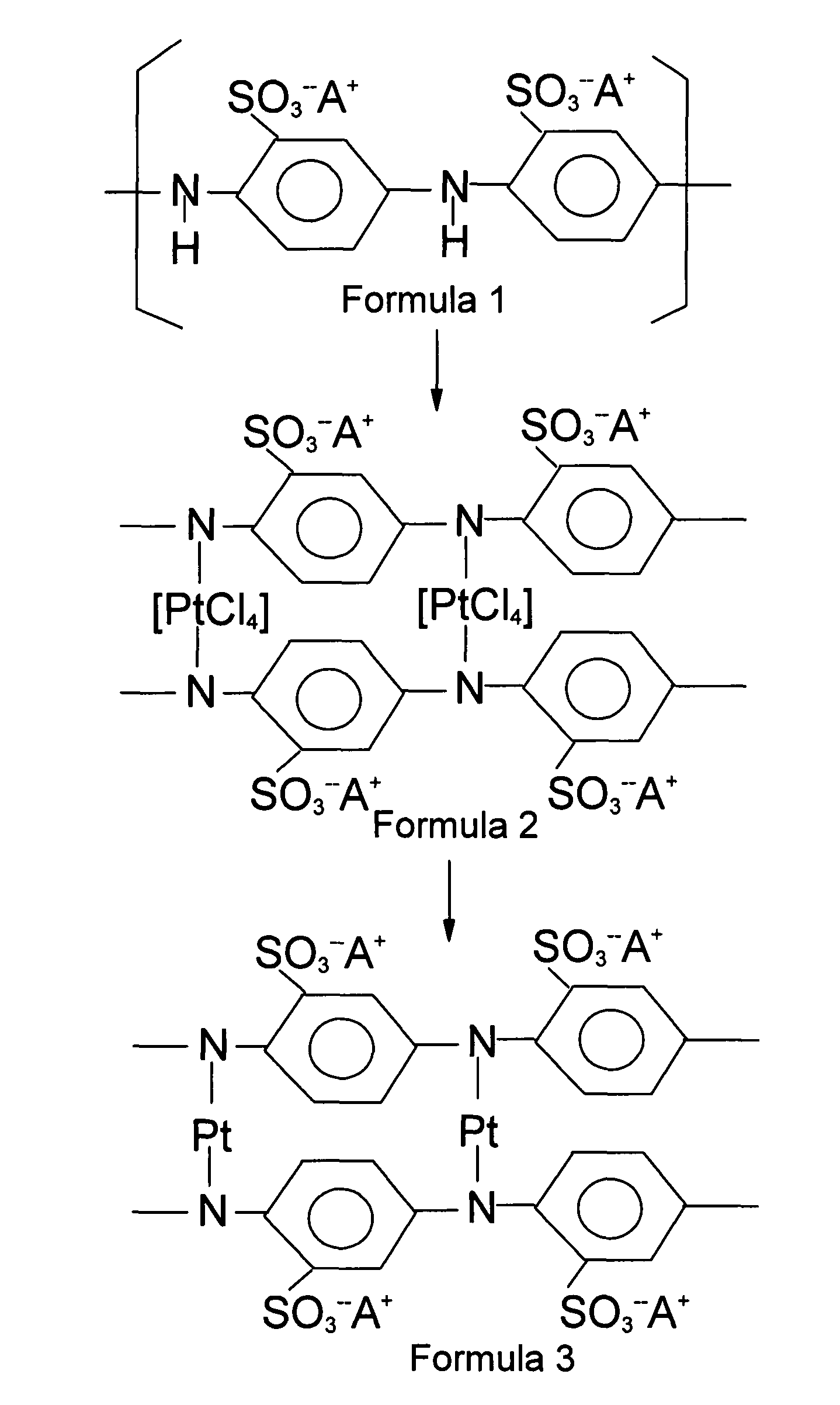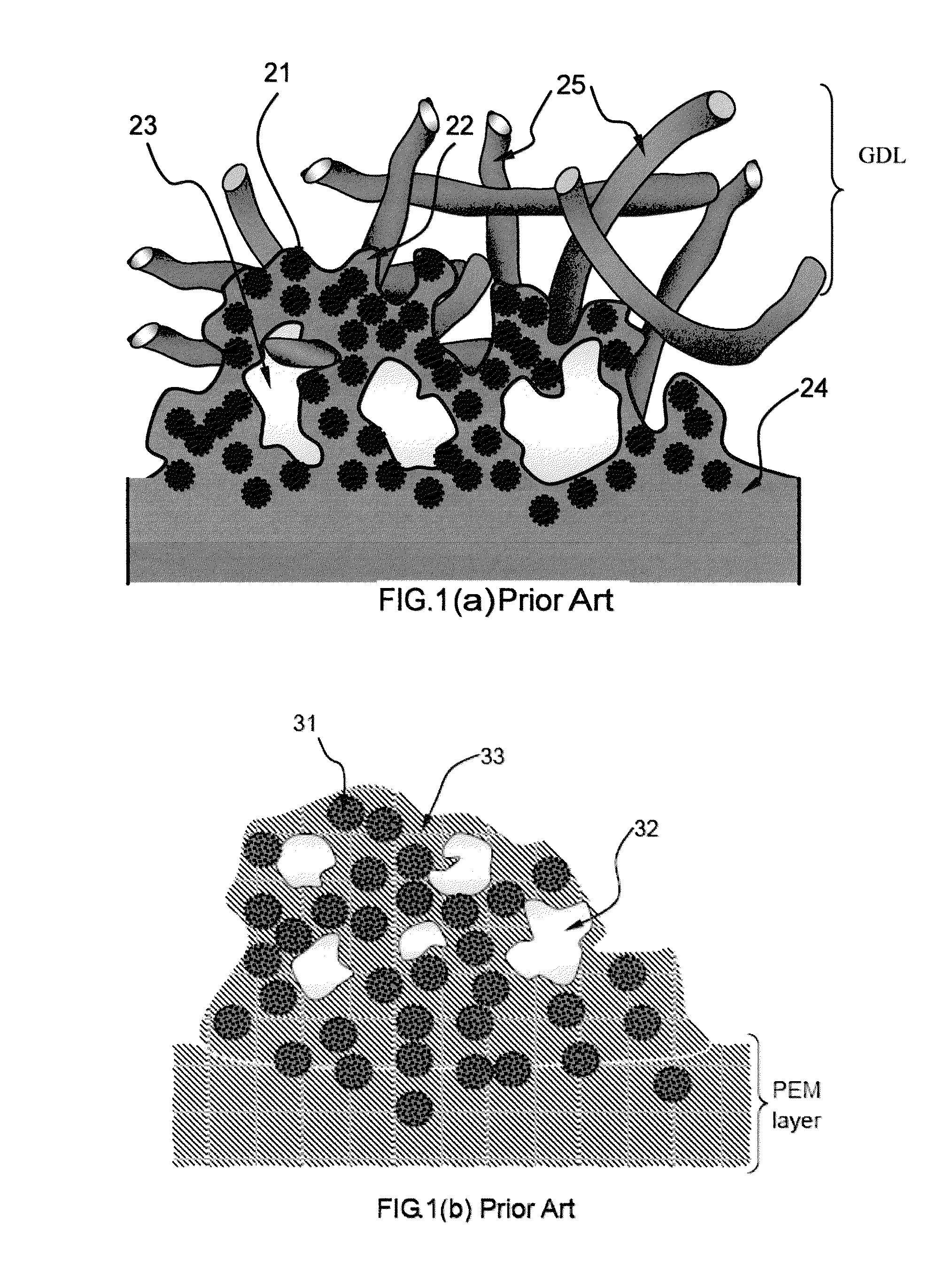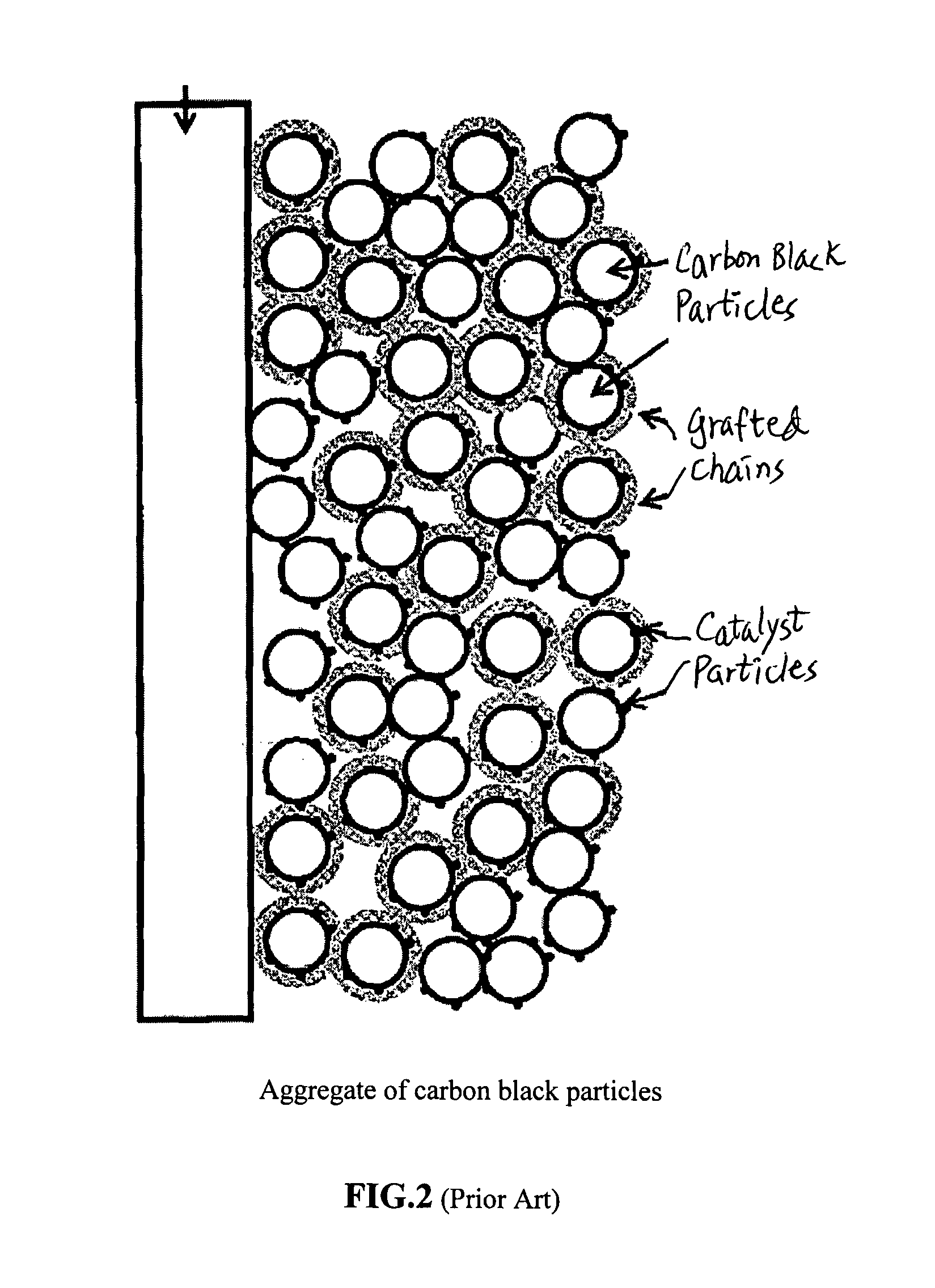Conducting polymer-transition metal electro-catalyst compositions for fuel cells
a technology of electrocatalyst and polymer, which is applied in the direction of non-metal conductors, cell components, conductors, etc., can solve the problems of fuel cell failure, possible fire hazards, and insufficient utilization of electrocatalyst sites, so as to improve catalyst utilization efficiency, improve fuel cell performance, and reduce ohmic loss
- Summary
- Abstract
- Description
- Claims
- Application Information
AI Technical Summary
Benefits of technology
Problems solved by technology
Method used
Image
Examples
example 1
Synthesis, Complexing and Reduction of Sulfonated Polyaniline (S-PANi)
[0095]The chemical synthesis of the S-PANi polymers was accomplished by reacting polyaniline with concentrated sulfuric acid. The procedure was similar to that used by Epstein, et al. (U.S. Pat. No. 5,109,070, Apr. 28, 1992). The resulting S-PANi can be represented by Formula 4 with R1, R2, R3, and R4 group being H, SO3− or SO3H with the content of the latter two being varied between 30% and 75% (i.e., the degree of sulfonation varied between 30% and 75%). The proton conductivity of these SO3− or SO3H-based S-PANI compositions was in the range of 3×10−3 S / cm to 4×10−2 S / cm and their electron conductivity in the range of 0.1 S / cm to 0.5 S / cm when the degree of sulfonation was from approximately 30% to 75% (with y being approximately 0.4-0.6).
[0096]Subsequently, 6.78 g of sulfonated polyaniline (with R1═SO3−, and R2═R3, ═R4═H in Formula 1) and 100 ml of distilled water were mixed in an Erlenmeyer flask for 30 minute...
example 2
[0099]As in example 1, 5.73 g of sulfonated polyaniline were suspended in 100 ml of distilled water. Then, 80 ml of 1.15% aqueous H2IrCl6 were added slowly to the polyaniline suspension / solution for a period of 60 minutes while stirring constantly. The resulting sulfonated polyaniline-IrCl4 complex was separated by centrifuging and decanting. The resulting solid was rinsed with distilled water until the rinse water had a pH value of 7.
[0100]The reductant solution of Example 1 was added to the sulfonated polyaniline-IrCl4 complex for a period of 2 hours at a temperature of 60° C. The product of this reaction was rinsed with distilled water until the rinse water had a pH of 7, and then was dried at 110° C. for 24 hours.
example 3
[0101]As in example 1, 5.73 g of sulfonated polyaniline were suspended (and partially dissolved) in 100 ml of distilled water. Then, 100 ml of 3.15% aqueous Ni(ClO4)2-6H2O were added slowly to the polyaniline suspension / solution for a period of 60 minutes while stirring constantly to produce sulfonated polyaniline-NiCl2 complex. The reductant solution of Example 1 was added to the sulfonated polyaniline-NiCl2 complex for a period of 2 hours at a temperature of 60° C. to produce the desired heterogeneous catalyst polymer containing Ni atoms covalently bonded thereto and presumably additional Ni nano particles physically dispersed in the polymer matrix. TEM studies indicate that a majority of the nano catalyst particles are smaller than 1.5 nm in size with a sizable number of them are approximately 0.5-0.6 nm.
PUM
| Property | Measurement | Unit |
|---|---|---|
| proton conductivity | aaaaa | aaaaa |
| proton conductivity | aaaaa | aaaaa |
| ion conductivity | aaaaa | aaaaa |
Abstract
Description
Claims
Application Information
 Login to View More
Login to View More - R&D
- Intellectual Property
- Life Sciences
- Materials
- Tech Scout
- Unparalleled Data Quality
- Higher Quality Content
- 60% Fewer Hallucinations
Browse by: Latest US Patents, China's latest patents, Technical Efficacy Thesaurus, Application Domain, Technology Topic, Popular Technical Reports.
© 2025 PatSnap. All rights reserved.Legal|Privacy policy|Modern Slavery Act Transparency Statement|Sitemap|About US| Contact US: help@patsnap.com



